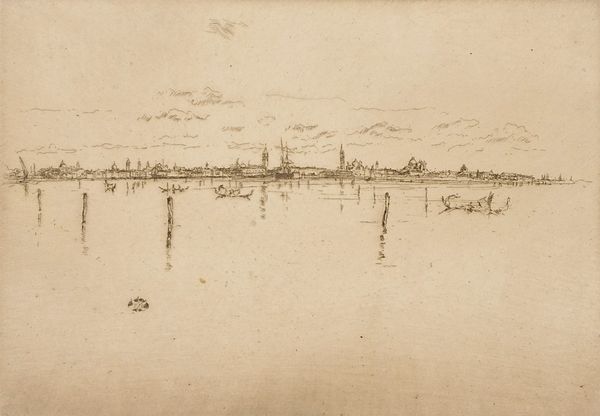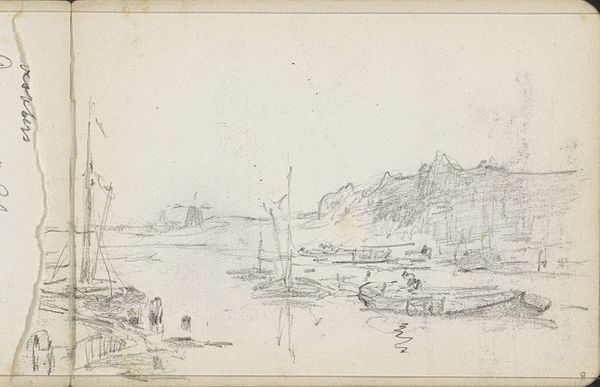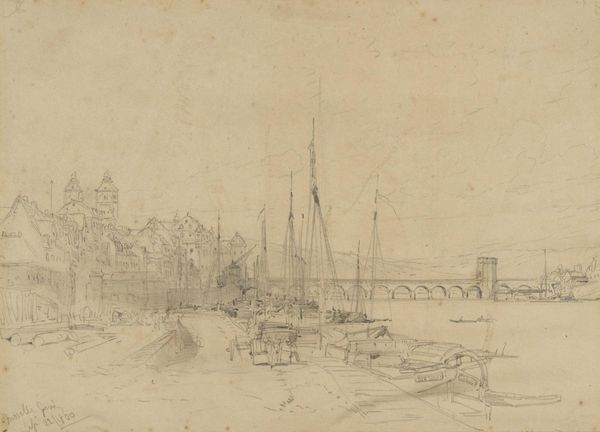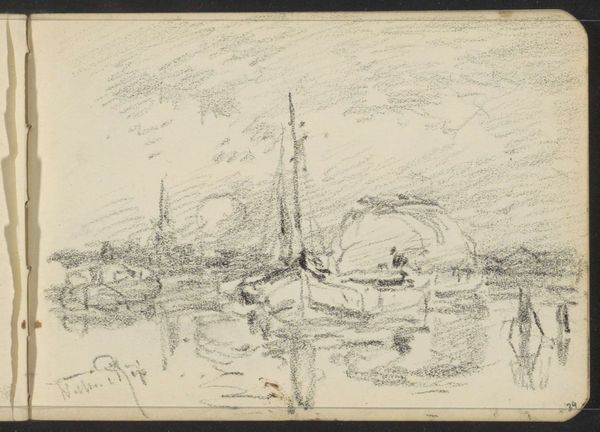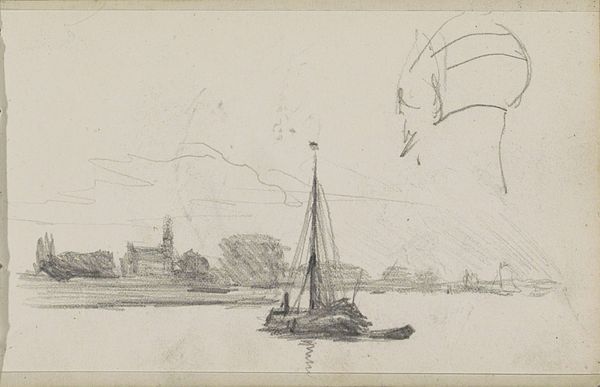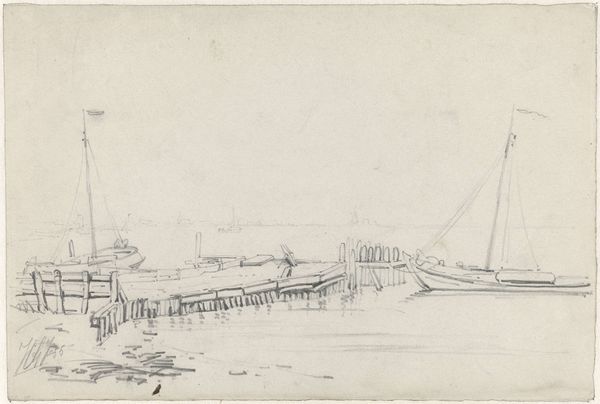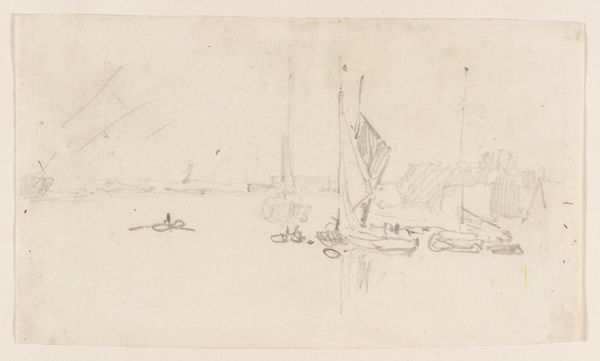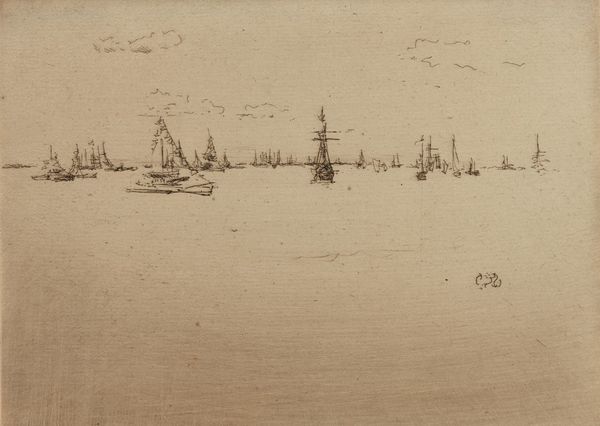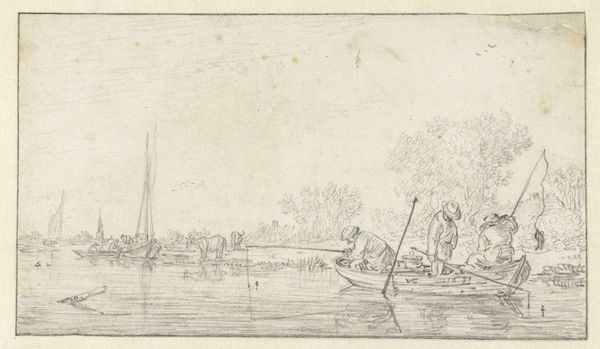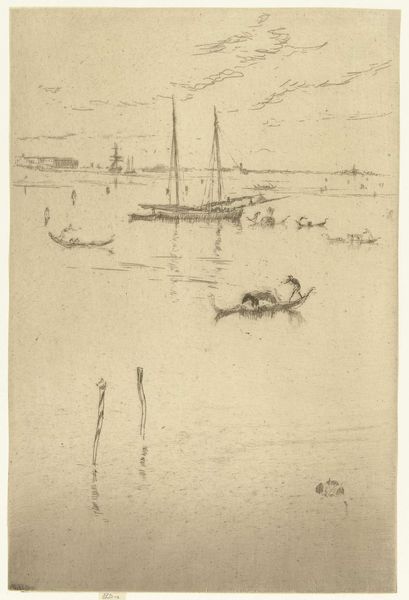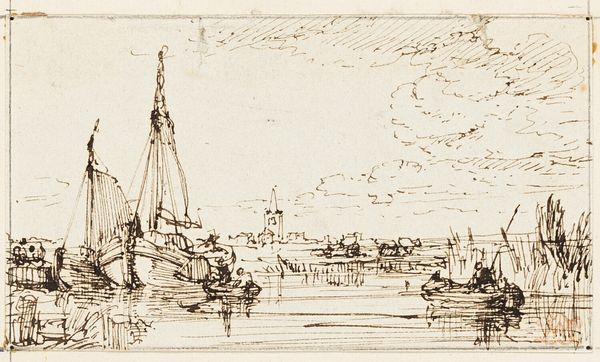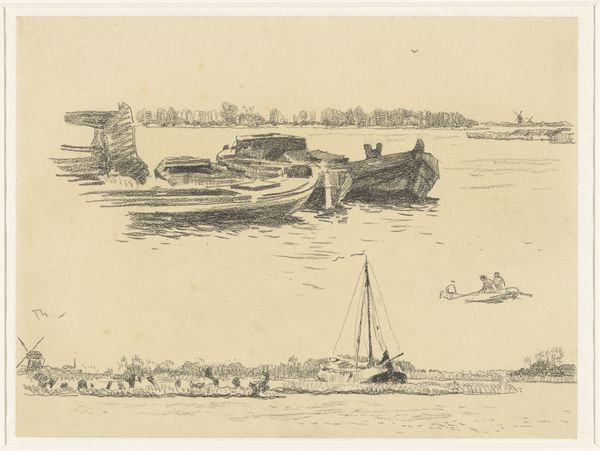
drawing, print, etching
#
drawing
# print
#
impressionism
#
etching
#
landscape
#
etching
#
cityscape
Copyright: Public Domain: Artvee
Curator: Looking at "Tilbury," an etching created by James Abbott McNeill Whistler in 1887, I'm struck by its immediate atmosphere, even before considering its historical significance. What is your first impression? Editor: It feels like a faded memory. There’s a delicacy to the lines, a whisper of a bustling port rendered with such light strokes. It’s almost ethereal. But I wonder about those small figures in boats – who were they? What stories did they carry to and from Tilbury? Curator: Tilbury Docks, you see, were becoming increasingly important for London's maritime trade at this time. Whistler's choice to depict it speaks volumes about the changing face of the city. This print is from his Thames Set of etchings, and he often focused on the working river, moving away from idealized picturesque views. Editor: And away from the elite, right? By focusing on labor and transit, Whistler inserts himself into the dialogue of industrial revolution and its effect on the working class. He seems to be more concerned with lived reality, not some imagined picturesque past. Curator: Precisely. His printmaking, particularly his etchings, allowed for wider distribution. We could even consider it a form of visual journalism, making these docklands visible to a broader public beyond those who actually worked and lived there. He aimed, I think, to capture the "poetry" of modern life. Editor: "Poetry," or perhaps "dirge?" Think of the pollution of the docks. The exploitation of labor. It's tempting to idealize his subtle marks as beautiful, but were those factories, masts, and boats contributing to some form of slow violence? Who benefits from seeing this scene reproduced as fine art? Curator: Those are vital questions. The beauty isn’t in a naive celebration, but rather in capturing the transience of that moment. Whistler's technique—his subtle layering of lines and delicate shading—allows him to capture fleeting effects of light and atmosphere. His impressionism, then, has political implication. Editor: That transience also highlights the disposability of the working body, doesn't it? What becomes of these figures and of Tilbury docks, swallowed by the inevitable tide of industrial modernity? It's a loaded, uneasy image. Curator: It makes me wonder, in what ways are we similarly failing to acknowledge the people on the front lines of our own contemporary world? Perhaps Whistler prompts us to reflect critically, using aesthetic experience as the space to confront those difficult questions. Editor: Indeed. It requires looking beyond just surface beauty, and facing that disquiet is part of truly engaging with art and its role in the social theater.
Comments
No comments
Be the first to comment and join the conversation on the ultimate creative platform.

